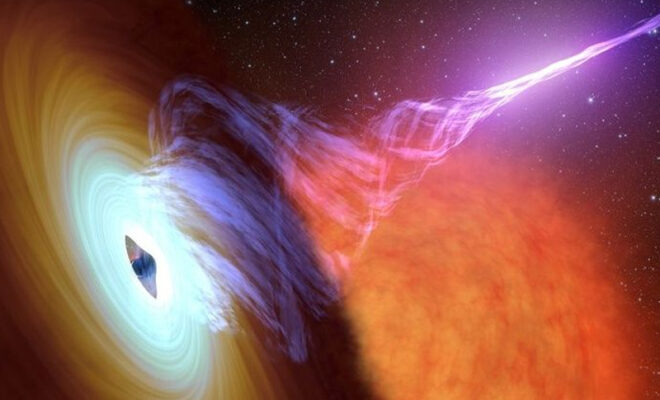2 Cosmic Wonders: Devil Star Defies Death, Devil Comet Dazzles In Space

Two fascinating cosmic events that have caught the attention of astronomers worldwide this week. Let’s start with the first devil star!
Astronomers are puzzled by this star because it’s showing signs of activity months after its supposed death. Normally, once a star dies, it fades away and doesn’t exhibit such energy outbursts.
Tasmanian Devil Star (LFBOT)
The “Tasmanian devil star” is a term used for a unique and rare type of dead star, located about 1 billion light-years away from Earth. This star, unlike others, has been showing unusual flares of brightness, which is quite unexpected for a star considered ‘dead.’
The Tasmanian devil star, however, has been flaring up frequently, radiating more energy than typical stars. These flares are as powerful as the original event that led to the star’s death, adding to the mystery.
This Tasmanian devil star is classified as a Luminous Fast Blue Optical Transient (LFBOT), which is quite different from a regular supernova. LFBOTs are known to emit a bright blue light that peaks quickly and fades within days.
They release enormous energy, more than what an entire galaxy of billions of stars like the Sun would emit. The mechanism behind this massive energy release is not yet understood, making LFBOTs a subject of intense study and interest in the astronomical community.
Devil Comet With Horns
Another intriguing cosmic phenomenon is the “Devil Comet with horns,” officially known as 12P/Pons-Brooks. This comet got its nickname due to the appearance of two horn-like structures observed during its previous outbursts.
The comet is notable for its size, being three times larger than Mount Everest, and is characterized by violent ejections of ice and gas, similar to a cold volcano.
The Devil Comet has exploded four times so far. These explosions have been observed on July 20, October 5, November 1, and most recently just a couple of days ago. Each explosion has resulted in the comet brightening significantly, with the latest one being its most intense, causing it to shine as brightly as an entire galaxy.
Danger Or Threat To Earth
Both the Tasmanian devil star and the Devil Comet with horns represent exciting and mysterious occurrences in our universe, captivating astronomers and the public alike with their unusual behaviors and spectacular displays.
Also Read: Electric Cable Highway To Make You Travel Delhi-Jaipur In Just 2 Hours
Regarding safety concerns, the Devil Comet poses no danger to Earth. Although it’s moving towards our planet, it’s expected to pass by at a safe distance when it reaches its closest point in June 2024. After this close approach, the comet won’t return until the year 2095.



